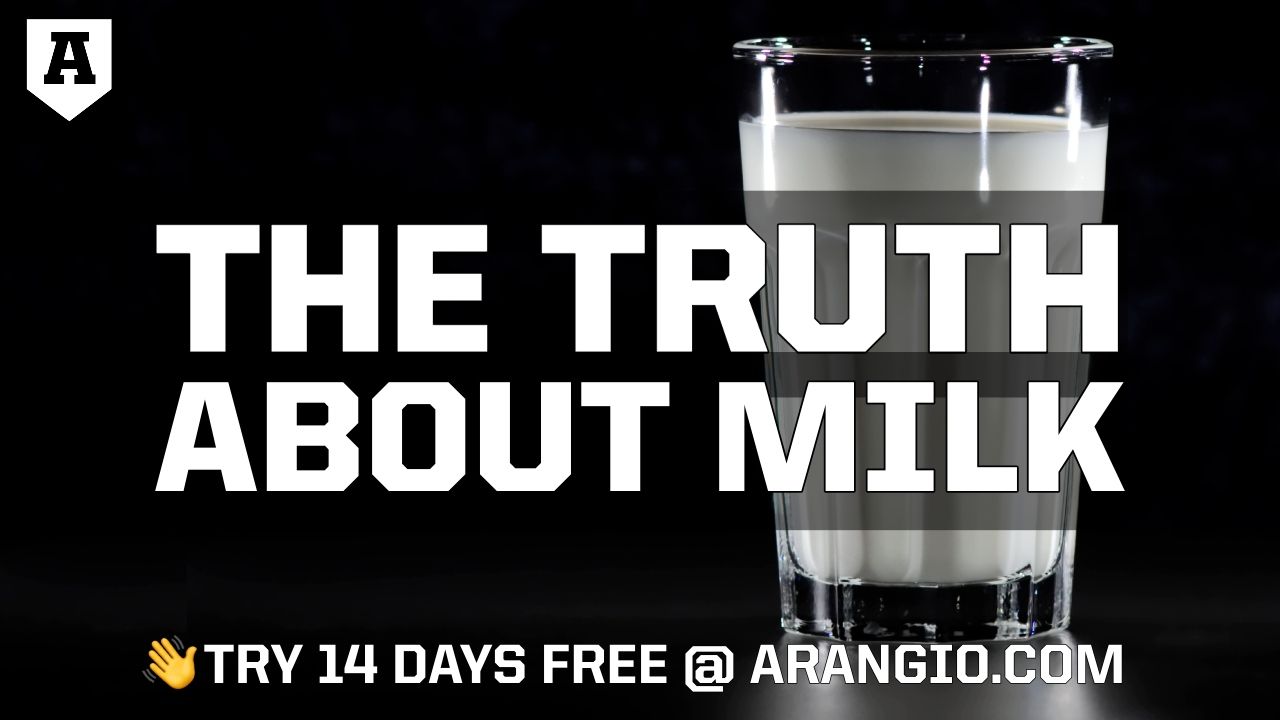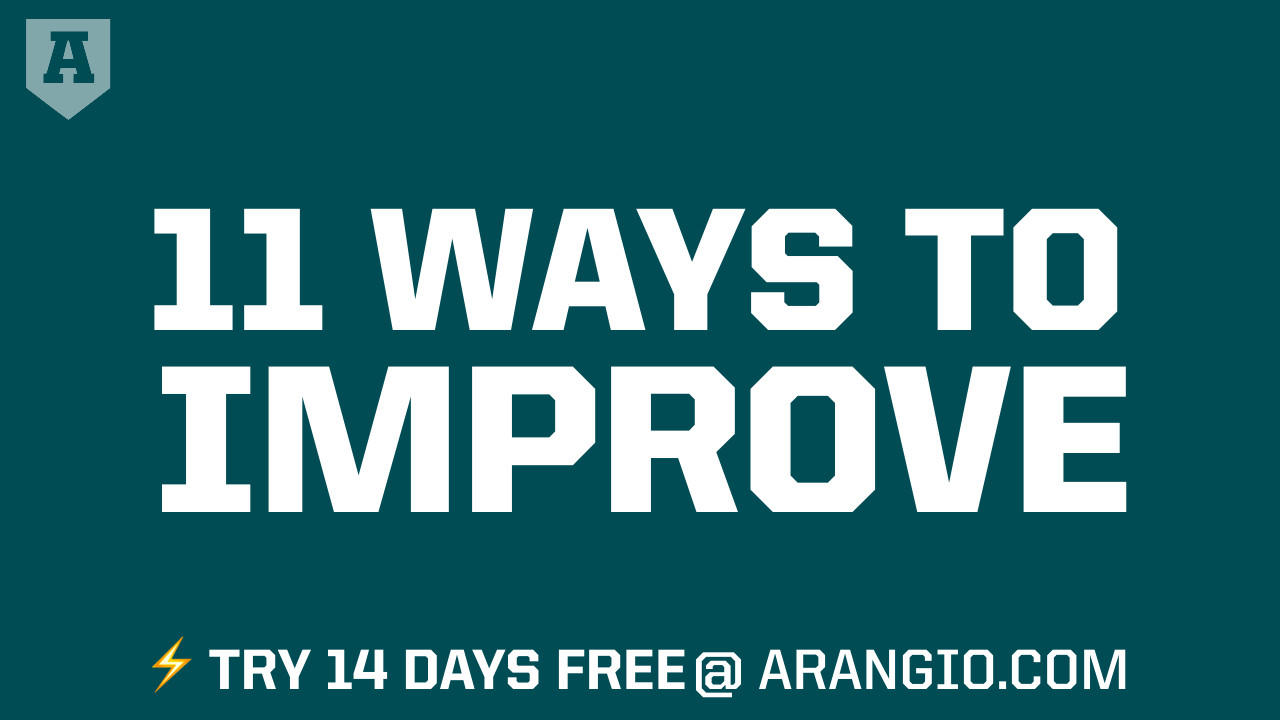The Truth About Milk
Aug 28, 2025
When I was in middle school, around seventh grade, my go-to breakfast was a large bowl of processed cereal grains drenched in cold cow's milk.
Almond milk was not the rage in those days.
It was 1984 and very few people realized it was indeed possible to milk an almond.
After getting dressed in my school uniform and adjusting my clip-on tie, I'd enter the kitchen.
Inside a dedicated cabinet lived colorful boxes of Honey Toasted O's, Wheat Nuts or some other healthy-sounding breakfast option.
On the kitchen table, next to the salt-and-pepper shakers, was a small sugar bowl.
It was not uncommon for me to sweeten my Raisin Bran with a heaping spoonful of the granulated goodness.
My mom only purchased cereal with small-to-medium amounts of sugar, not weapons-grade sweetness.
For the record, Mom always denied my persistent requests for the cereal brands promoted by tired-looking vampires, wide-eyed leprechauns, and other cartoon mascots that made ominous claims like, "it brings out the tiger in you."
A year later, in the eighth grade, I became more dedicated to training for football.
My dad, a standout football player in both high school and college, introduced me to my very first strength-and-conditioning coach, George "Eskimo" Joseph.
Eskimo had worked with many young athletes who went on to play football at top-level colleges and in the NFL.
When it came to optimizing performance, Eskimo was a pioneer.
He advocated groundbreaking concepts like metabolic resistance training, way before this technique was mainstream like it is today.
In the early 1980s he recommended an anti-inflammatory diet that prioritized eating real, whole, nutrient-dense foods and avoiding processed options.
He said to eat like humans ate when we first roamed the planet about 2.5 million years ago. Nowadays this is known as a "paleo" approach to nutrition.
For college-aged athletes, he touted the original performance-boosting pre-workout supplement: One cup of black coffee, no cream or sugar, consumed at the start of your workout.
Still in his 40s, Eskimo practiced what he preached and had the compact, athletic physique of a middleweight Greco-Roman wrestler.
He sometimes joined me and my teammates during a tough workout.
He would take a sip of his plain donut-shop coffee and then effortlessly crank out a single 10-rep set of incline chest presses with a pair of 90-pound dumbbells, or heavier, just for fun.
On other days he would maintain strict 45-second rest intervals between multiple sets of 315-pound barbell squats.
This relentless pace would induce nausea in much larger athletes who had not practiced Eskimo's training methodology.
The formative lessons from Eskimo, and Dad, kick-started my passion for fitness and nutrition.
As a result of their combined teaching efforts, I've been fortunate enough to deliver over 100,000 body-transformation programs to clients around the globe.
The Truth About Milk
Okay, back to what I ate for breakfast in middle-school.
One day, after a workout, Eskimo was discussing nutrition and he asked me what I ate for breakfast.
I told him about my pre-dawn, high-sugar meal and he responded with this sage nutrition advice:
"Sugar is poison. It'll kill ya."
Instead, he told me to swap the cold cereal and cow's milk with bacon and eggs.
Or ham and eggs. Or steak and eggs. Plus a sweet potato to help fuel my workouts.
And then he proclaimed something that would turn my middle-school world upside down:
"Milk is for babies. And you're not a baby."
Huh?
But what about "got milk?" and "milk does a body good" and other catchy advertising campaigns?
You see, the milk industry continues to invest multiple millions annually, in marketing, encouraging you to drink more cow's milk.
To this day, it's almost counterculture to think Americans wouldn't drink milk from a cow.
Inside I was like, "Noooo! Shredded Wheat, the blandest cereal ever created, will be unbearable without the sweetness of cow's milk. I drink a gallon of milk in a week, sometimes in a day."
But then he dropped some science and explained how milk, a nutrient-rich liquid food, is produced by the mammary glands of mammals.
It contains lactose, a natural sugar, and is the main source of nutrition for young mammals before they are able to digest solid food.
Problem is, many humans are lactose intolerant due to a shortage, or deficiency, of an enzyme called lactase, which is manufactured in the small intestine.
As a result of this sensitivity, you cannot digest the natural sugar found in milk and other dairy products.
Perhaps that explained why my belly hurt shortly after I ate cereal with milk.
He asked, "Do you think it would be strange to drink the milk of a tiger?"
I agreed that it would be weird, perhaps even illegal, to drink tiger's milk (plus it would be dangerous to attempt to milk a tiger).
Eskimo presented his then-radical logic:
🍼 Human milk is designed for a baby human
🍼 Cow milk is intended for a baby cow
🍼 Tiger milk is meant for a baby tiger
His anti-milk logic seemed reasonable to my middle-school brain:
I am not a baby cow; therefore, I do not drink cow's milk.
So, from that day forward, I did my best to avoid:
- Sucrose (aka table sugar)
- Lactose (aka milk sugar)
Cutting out table sugar meant no more grape-flavored A-Treat soda pop (the kind that came in a glass champagne bottle and old-school wooden case).
I replaced the cow's-milk-over-cereal with warm cereal, like 100% rolled oats or, even better, steel-cut "Irish" oatmeal.
I mixed the warm cereal with plain tap water because, well, almond milk was not yet mainstream. My oatmeal was like a bowl of confused porridge. It was like, "Am I breakfast or am I wallpaper paste?"
Look, most everybody knows table sugar isn’t good for you.
And it's very clear that milk sugar is problematic for many.
But it can be hard to break the habit.
When I gained 35 pounds in college, and stayed obese for a few years after, it was mainly because I re-introduced cow's milk, pizza, ice cream, lasagna, and various milk-based processed foods.
Plus beer and a bunch of other processed food too. It's no wonder I was fat and depressed.
If you’re having trouble cutting back on the sweet stuff, this might provide a little extra motivation:
New research found that people who reduced their sugar intake had better markers of health in just two weeks.
A review published in The Journal of the American Osteopathic Association analyzed previous research on sugar intake, weight, and health, and found a link between eating a lot of sugar (especially fructose) and an increased risk of weight gain.
Scientists also discovered that having overweight patients lower their intake of fructose — high-fructose corn syrup in particular— helped lower a person’s risk of developing obesity, fatty liver disease, and type 2 diabetes.
Fructose accelerates the conversion of sugar to fat, the researchers pointed out, and that can lead to these health complications.
As a result, they recommend doctors talk to overweight patients about cutting back on their sugar intake, rather than just focusing on the number on the scale.
The review particularly zeroed in on high fructose corn syrup because it converts to fat up to 18.9 times faster than glucose.
High fructose corn syrup — which is found in 75 percent of packaged foods and drinks — flips on the metabolic pathways that converts it to fat, where it’s stored in the body, causing weight gain, the researchers said.
It also tricks the brain into thinking that the body is starving and, as a result, makes you less inclined to exercise.
On the positive side, people in the review who cut out high fructose corn syrup became healthier without dieting or counting calories.
When you eat too much sugar, it causes a spike in insulin levels.
You see, insulin helps the body to process and store energy for current and future use.
But after decades of these spikes, cells in your body become non-reactive to the insulin, which can cause high blood sugar, kidney failure, and diabetes.
A high sugar intake also promotes chronic inflammation, which is linked to many diseases, including heart disease and cancer.
It can even impact your central nervous system, especially your brain’s ability to control appetite.
Most Americans eat two to three times more added sugar than the American Heart Association (AHA) recommends.
The AHA suggests a stricter added-sugar limit of no more than 100 calories per day (about 6 teaspoons or 24 grams) for most adult women and no more than 150 calories per day (about 9 teaspoons or 36 grams of sugar) for most men.
While high fructose corn syrup in particular was flagged, your body can’t really tell the difference between fructose, table sugar, and even honey. If you’re looking to cut back, it can be from all sources.
If you know you eat too much sugar, here are a few things you can do to scale back:
⚠️ Avoid processed foods whenever possible (they tend to be sugar traps)
⚠️ Choose foods with natural forms of sugar, such as fruit, whenever you can
⚠️ Replace artificial sweeteners with mashed bananas, dates, prunes, or applesauce whenever possible (like in baked goods)
⚠️ Cut back on the amount of sugar you add to things, like coffee, to give your taste buds time to catch up
Simply stated, you can't out-train a poor diet.
This is exactly why I provide a paint-by-numbers "Nutrition Masterclass" for my clients.
Successful men and women, over the age of 40, train smart, get quality sleep, and practice mindful nutrition.
If you choose to ignore these proven habits of health, you'll struggle to cross the proverbial finish line.
Huh?
Imagine running a 100-meter race, and around the 50-meter mark, slowing down, then stopping at 60 meters and jogging in place.
Totally weird, right?
Can you imagine if you were on your high school's track team and you actually did that during an official race?
Just stopped running, and jogged in place, in front of a full stadium of screaming spectators.
Your coach, teammates, and everybody (except the opposing team) would be screaming wildly for you to RUN, RUN, RUN through the finish line.
So, gentle reader, ask yourself:
Have you crossed your personal finish line? Or are you merely jogging in place?
Today is the day to forgive yourself and get moving.
Start by sharing your priority-one goal and then scheduling some time to talk.
I'm here to help in any way I can.
Summary:
If you're having trouble losing weight, adopt a paleo-style nutrition plan that is low in sugar and avoid cow's milk (especially if you are lactose intolerant).
To your success,
Coach Joe
Joseph Arangio helps 40+ men and women lose weight, gain strength, and slow aging. He's delivered over 100,000 transformation programs to satisfied clients around the globe. If you want to increase longevity with the best online age-management program, or you want to visit the best age-management program in the Lehigh Valley, you can take a free 14-day trial.














